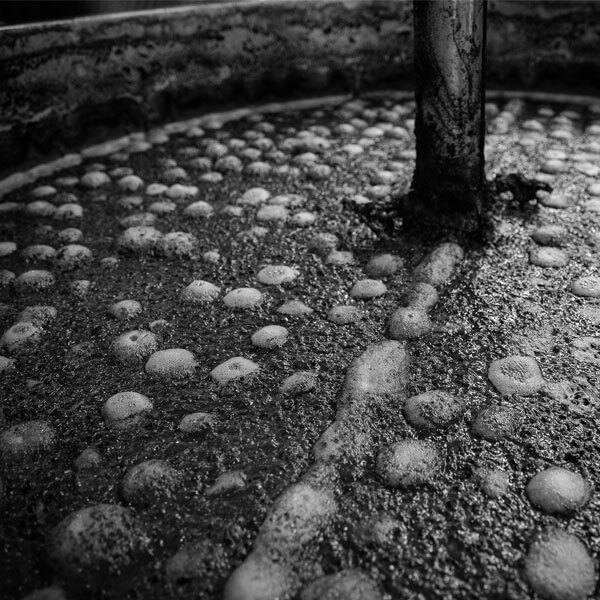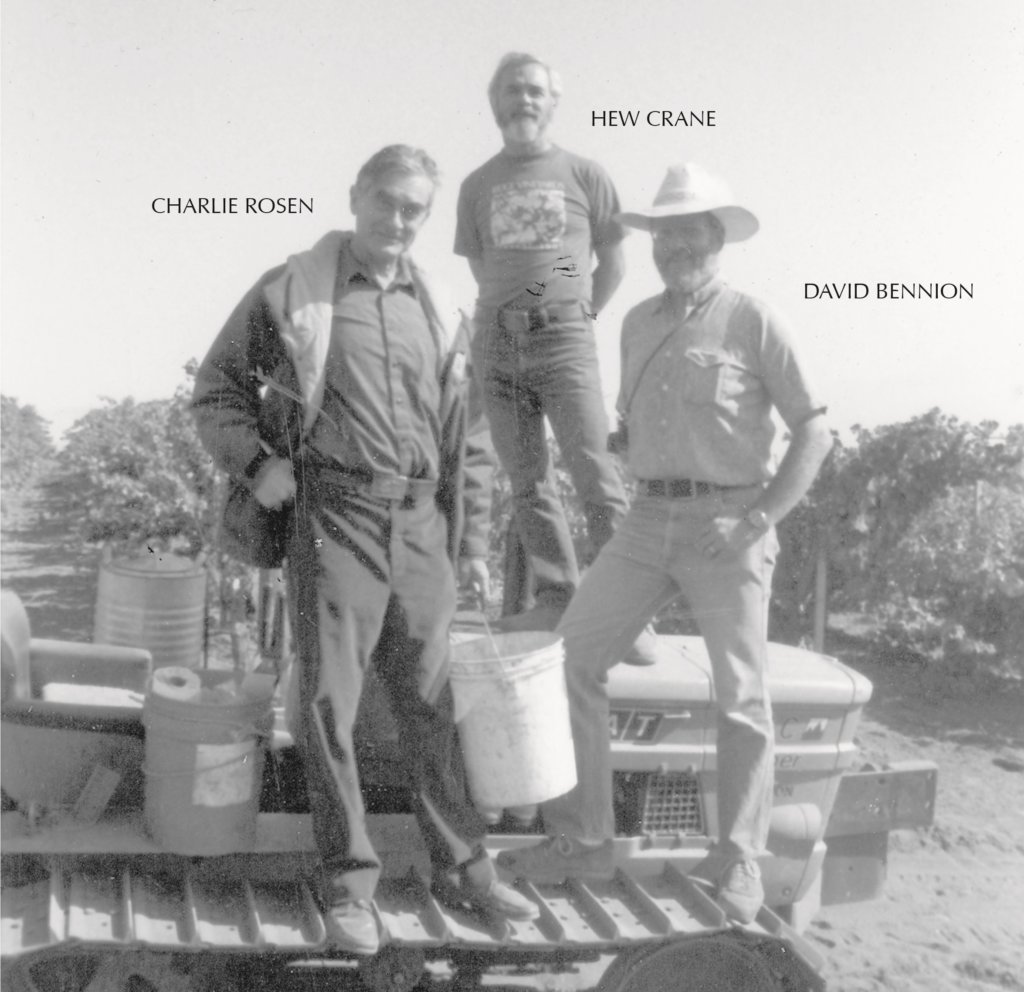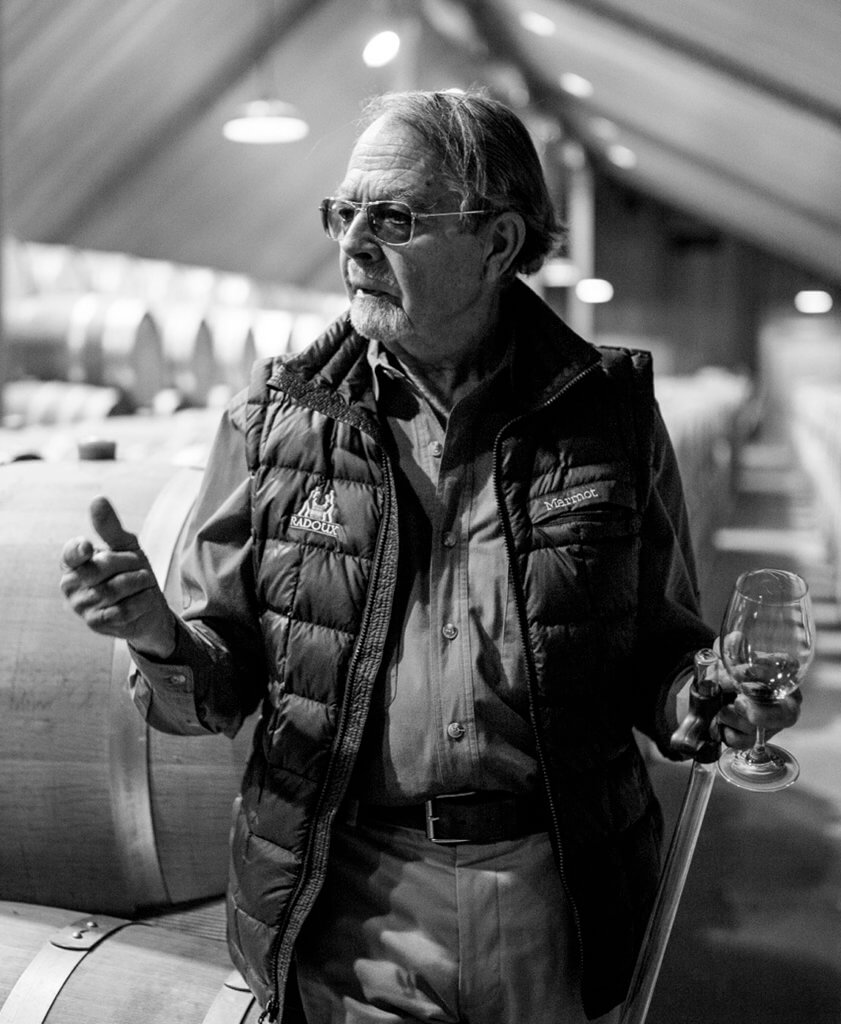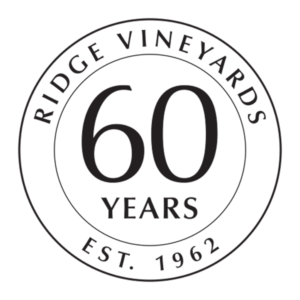Celebrating 60 Years of Fine Winemaking
Blog Post
January 2022
“We look forward to the next 60 years and attempting ever finer quality with each new vintage.” – Paul Draper, Chairman
Founding Ridge
Sixty years takes us back to the re-bonding of a small, late 19th-century winery that now serves as the Monte Bello tasting room. In 1959, the winery and a forty-acre vineyard abandoned in Prohibition were purchased by three friends, David Bennion, Charlie Rosen, and Hew Crane, all scientists at Stanford Research Institute (SRI). They bought the land with the idea that when they retired each of them would build a house and move up there. An added incentive was that they could camp out on the knoll on weekends with their kids as they were growing up. It had happened that in 1949, the previous owner had replanted three of the many small parcels to cabernet cuttings brought to California from Bordeaux in the 1880s. He also, for the first time on Monte Bello Ridge, planted a parcel of chardonnay. The grapes were being sold to a local winery in Mountain View. The partners were not really wine drinkers and had not thought much about the grapes. However, in 1959, one of them, David Bennion, held out a small tub of grapes thinking he would try some home winemaking. Having never done it before, he started by reading up on the basic techniques. Shortly after crushing the grapes, he and his wife, Fran, left on a long-planned vacation. To protect the grape skins floating on the surface from going to vinegar as they fermented, David used a very old technique he had read about, securing a wood lattice over the grape skins that submerged them a few inches below the surface of the juice. When they returned from their two-week vacation, they found the wine had fermented dry on the natural yeast present on the grapes. They pressed the skins and added the press wine to the free run putting it all in a half barrel. Over the next few weeks it went through a full secondary malolactic fermentation without adding a commercial starter.



Building the Team
A few years after joining, I had a chance to taste that “first” Ridge Monte Bello. It was beautiful: complex and long in the finish. I realized why tasting that wine had convinced their wine knowledgeable friends to insist they re-bond the winery and make wine. Several years before being offered the job, David Bennion heard a talk I gave on the wines of Chile and the 19th-century traditional techniques I was using in making my wines there. The partners, with the aim to increase production, had replanted more parcels and bought the abandoned Monte Bello winery up the road. David as the sole full-time employee was doing everything. He decided he needed to give up the winemaking and focus on managing the whole operation. Because my traditional approach coincided with their philosophy, he proposed that they offer me the job of winemaker.
Our first three vineyard workers were all from Mexico and lived on the property. Several years after I joined, they set up health insurance for David, myself, and our now five vineyard workers. A number of years after that they added a modest retirement plan. As far as I know, those benefits may have been among the first offered to workers from Mexico in the California wine industry. After my first five years working in the winery with our part-time crew of hippies, I asked our invaluable vineyard foreman, Elias Carasco, for two good men to work full-time with me. Eulalio Rios and Ramiro Garcia joined, and I showed them exactly how to carefully rack wine from barrel leaving behind any sediment and how to use the high-pressure equipment I had designed to wash the barrels in place. I’ll never forget after having shown Eulalio several times, he put his hand on my shoulder and had me step back while he did the operation better than I had. That’s how quickly these two learned to operate our crushing and pressing machines and other operations of fine winemaking. Indicative of their commitment to the work at Ridge, the average length of service for our vineyard and winery workers is over twenty years. The majority of our earliest workers retired at over thirty years. This depth of experience and dedication to what we are attempting to achieve places them among those most responsible for the quality of our wines.
Pre-Industrial Winemaking
Many of you are aware we took a very different approach to making wine than did almost any other California winemaker and it has made all the difference. My first “training” had been to taste the great wines of the world back when they cost $20 to $30 a bottle. These included the First Growth Bordeaux wines from the late ‘20s, the last half of the ‘40s, as well as the ‘53s, ‘59s, ‘61s, and ‘62s. In those years the wines were still made quite traditionally. I was also able to taste wines made in the 1930s from two California producers still using pre-Prohibition traditional techniques. Two were late ‘30s cabernets from Rixford’s La Cuesta winery and four from the last half of the ‘30s from Inglenook. Those wines were finer and more complex at forty years of age than any California cabernets from the ‘40s and ‘50s at thirty years, including the BVs and Inglenooks of those years. By the ‘40s, virtually all California producers were using the modern technical approach being developed at UC Davis. I realized that these techniques were more focused on making consistently clean, but not complex wines. Tasting and comparing all these wines I decided we should look back to the traditional techniques used to make the greatest wines of the 1860s and 1870s in Bordeaux. We looked as well to the very similar techniques used to make the best California cabernets from the late 1880s to Prohibition.
In the ‘70s, as I understood more about the vineyard and observed the variations in the phenolic analysis provided each year by our lab director, Leo McCloskey, I learned how to adjust our techniques, known to my hippie crew as “the holy grail,” to the variations in weather, yields, and growing conditions of each year.
In the ‘80s, it became clear that decisions in the vineyards had to be improved for the quality and consistency of the wines to continue as before. Several of the vintages of the ‘80s were not up to our high standards for Monte Bello. It was essential that we find an experienced viticulturist. 1989, enter Dave Gates with a B.S. and M.A. from Davis in viticulture, experience teaching, and practical experience working for three years for a top vineyard management firm in Napa. In the early years, with a limited number of parcels producing low yields, we had been able to produce excellent vintages consistently. By the ‘80s, we had replanted more small parcels on somewhat differing soils and exposures. We needed a trained viticulturist to control yields and work more knowledgeably with weather conditions, the health of the soil, and the individual vines. Dave brought the knowledge and experience we needed. He quickly learned that grapes on Monte Bello would not typically ripen fully before cold weather set in if the vines were pruned to Napa yields. As he gradually brought the vineyard up to his standards, our yearly push for greater quality came not just from the winery but the vineyard as well. Dave has now directed our vineyards for thirty-three years. He has not only mastered growing the Bordeaux varietals on Monte Bello with its cool climate and limestone soils, but has become, I believe, the leading expert in California in the growing of high-quality zinfandel. Dave has been essential to what we have achieved over the last thirty years.
In the mid-90s, two individuals joined Ridge who, in the new century, would take responsibility for producing some of the finer, most consistent vintages in our history. First, Eric Baugher, with no experience in wine but a degree in biochemistry, took over from Jim Kennedy as Lab Director. After two years when we had just lost our cellar foreman in mid-harvest, he asked me if he could help with posting my Spanish language work orders and following up with the crew while continuing his work in the lab. Shortly after that, he asked if he could learn our approach and each of the winemaking jobs and then becoming an Assistant Winemaker. Over the years as I stepped back from day to day operations, I named Eric winemaker for Monte Bello in 2001. Eric’s wines of the last twenty years are among the best we have made.
John Olney joined Ridge in 1996, whom I interviewed on the request of Kermit Lynch. I was sure I would hire him even before the interview was over. John had worked with Kermit for six years, had traveled extensively in France, done internships with Gerard Chave, Lucien Peyraud, and Aubert de Villaine. After a winemaking course at Montpellier, he had taken a winery job in the Santa Barbara region. He was fully experienced in the more traditional approach taken by the producers with whom he had worked in France. He understood our approach and took it on enthusiastically. In 2001, he became winemaker at Lytton Springs where he worked closely on the complete rebuilding of the old original facility. He has proceeded to make some of the finest Lytton Springs zinfandel and to do it more consistently than I had done.
In 2021, having only ever worked at Ridge, Eric made the decision to leave Ridge and pursue his dream of working in the Napa valley. John Olney was promoted to head winemaker and took on the major job of overseeing all winemaking at both Lytton Springs and Monte Bello. John had worked with me at Monte Bello for his first three years before moving to Lytton Springs, and now is again working with the Bordeaux varietals as well as zinfandel. After a year of covering both operations himself, he has brought in a young experienced winemaker to work with him at Monte Bello. Our aim today is to continue the traditional approach John has perfected at Lytton and at Monte Bello to continue to apply the experience and techniques that have served us so well over the last sixty years in making the finest possible Monte Bello. As he gives more responsibility to his team at Lytton, and directs a new winemaker at Monte Bello, John is demonstrating the depth of his ability both to teach and to manage.
Looking Ahead to the Next 60 Years
In looking back at our last 60 years, I’ve focused entirely on production, that is, the winery and vineyards. From the beginning, our success has been built on our attempt to make some of the finest wines being produced today. However, any successful company depends on much more than just production. In the last twenty years, we have assembled an incredible team that has brought the other essential aspects of our operation to a level that has placed Ridge among the most respected wine producers in the world.
We look forward to the next 60 years and attempting ever finer quality with each new vintage.
-Paul Draper, Chairman

Stay up-to-date with the latest RIDGE news, wine releases, and special offers – join our mailing list.
Wait!
In order to qualify for user related discounts, you must log in before proceeding with checkout. Click the button below to log in and receive these benefits, or close the window to continue.
Log In